At the very first edition of Amsterdam Drone Week, concepts like Mobility as a Service were a major theme, while the show floor featured drones large enough to carry people. However, it was widely understood that regulations and expectations associated with uncrewed technology needed to change to enable new mobility ecosystems before these vehicles could safely operate, and discussions around what it means to do so have defined the event ever since. Amsterdam Drone Week 2024 saw a continuation of these conversations as well as an important evolution of them.
We’ve already highlighted the latest innovations on display, as well as some insights from various sessions, but there were numerous talking points that came up in both places and general conversation. These topics further illustrate what has changed when it comes to the innovations and regulations that will define the future of the airspace.
Going Beyond ATC/UTM with Digitalization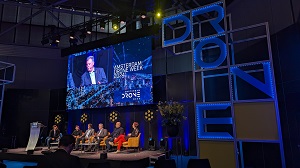 The standards developed by the International Civil Aviation Organization (ICAO) have enabled aviation to become the first ultra-safe transportation system in history, which is a reputation no one wants to see lowered on account of what it will means to see drones newly share the airspace. Countries are able to share their skies to their mutual benefit thanks to systems like air traffic control (ATC), and that same type of communication and coordination is foundational to uncrewed traffic management (UTM) systems that are designed to enable this same type of connectivity for drones. Sorting out what it means to see these systems effectivity integrated has long been a topic of conversation.
The standards developed by the International Civil Aviation Organization (ICAO) have enabled aviation to become the first ultra-safe transportation system in history, which is a reputation no one wants to see lowered on account of what it will means to see drones newly share the airspace. Countries are able to share their skies to their mutual benefit thanks to systems like air traffic control (ATC), and that same type of communication and coordination is foundational to uncrewed traffic management (UTM) systems that are designed to enable this same type of connectivity for drones. Sorting out what it means to see these systems effectivity integrated has long been a topic of conversation.
However, one topic that came up in a big way at Amsterdam Drone Week was around this integration not being about one system becoming part of the other, or even seeing these two systems work together. As Mildred Troegeler from Boeing said, what is needed is transformation of these systems at a global level. That will require a further digitalization of the industry as whole, which means what’s next isn’t about ATC or UTM, but something new that can combine aircraft types, platforms and awareness.
Data-driven regulation will ultimately drive and enable the creation of this system, which was a further topic of discussion. How different stakeholders across the ecosystem reference and want to utilize specific pieces of data in this process will be a key development in the creation of this new system.
Going Beyond Public Acceptance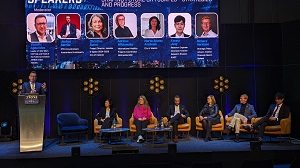 the most attention, sorting these issues out can only happen if the public accepts them. Challenges associated with the public acceptance of drone technology has long been talked about, but Amsterdam Drone Week highlighted the need to go beyond having the technology merely accepted.
the most attention, sorting these issues out can only happen if the public accepts them. Challenges associated with the public acceptance of drone technology has long been talked about, but Amsterdam Drone Week highlighted the need to go beyond having the technology merely accepted.
Luc Tytgat, Executive Director at EASA, talked about the communities that form the cities, regions, and entire countries that EASA serves, and how these communities are the ultimate stakeholders. Getting these communities to understand and accept drone technology isn’t enough, as they need to be able to actually ask for and, in cases, demand them. That can mean demands ranging from wanting to avoid the inconvenience of being struck in traffic to a mandate that ensures life-saving resources will be delivered in the most efficient way possible.
It’s a topic that came up in various ways on the program, during sessions that were focused on the future of eVTOLs as well as what it meant for the city of Hamburg to build a UAM strategy. It’s a key development, as a shift of public acceptance to community demand will drive the industry forward in ways that would otherwise be impossible.
AI as a Force, Not a Controller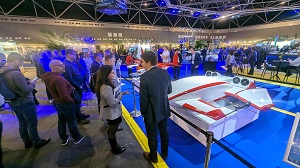 That was a relief on multiple levels though, as it reflects what it can mean when an entire industry has a sense of how to best think about and approach AI-driven solutions that will soon be available.
That was a relief on multiple levels though, as it reflects what it can mean when an entire industry has a sense of how to best think about and approach AI-driven solutions that will soon be available.
Explored in detail during the opening panel discussion that was a reflection on a global approach to drone integration, innovations with AI were heralded as a means of further ensuring uncrewed systems will be able to more safety share the airspace. Seeing as how these innovations can do everything from improving inspections to enhancing communications systems, it's clear AI will be able to help with auxiliary tasks and lower the workload of people.
However, just as important is knowing what AI is not going to be doing, and that's being put in total control of a given operation. Using AI as a force rather than a controller provides the entire industry with a roadmap to adoption that others could learn from in a big way.
Learnings from the UTM Operational Key Site in Dallas
The need to establish performance-based standards and approaches when it comes to the integration of  uncrewed aircraft into the airspace came up in nearly every session and conversation at Amsterdam Drone Week, but that’s been the case since the inaugural version of the event. What was different were questions and insights around these issues as they related to the FAA’s work to create a UTM Operational Key Site in Dallas, Texas. Everyone wanted to learn more about what they’ve been doing and learning there.
uncrewed aircraft into the airspace came up in nearly every session and conversation at Amsterdam Drone Week, but that’s been the case since the inaugural version of the event. What was different were questions and insights around these issues as they related to the FAA’s work to create a UTM Operational Key Site in Dallas, Texas. Everyone wanted to learn more about what they’ve been doing and learning there.
In order to enable drone operations at scale conducted beyond visual line-of-sight (BVLOS) and below 400 ft AGL, the FAA worked with a consortium of industry operators to facilitate these BVLOS operations in the Dallas-Fort Worth, Texas area. The focus of the UTM Key Site Operational Evaluation is to assess the maturity and operational suitability of UTM strategic coordination and conformance monitoring services. The tests and evaluations being conducted there will define common requirements to enable routine BVLOS operations in other locations.
You can find the specifics of what’s happening in Dallas in Miriam McNabb’s always excellent reporting, but suffice to say, there’s a lot. What was even more instructive than this update was how many different people on stage and on the floor said they were keeping tabs on the developments there and wanted to learn more. Stakeholders from across Europe are clearly looking at what’s happening in Dallas to not only better understand what’s possible but to also potentially create similar models in regions across the continent.
Forming a “Coalition of the Willing”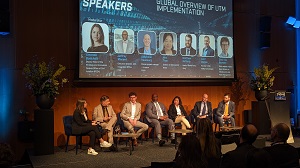 Speakers from key agencies such as FOCA, NASA, the FAA, and more took to the stage to discuss where things are with rapid advancements in UTM technology from a diverse set of regions. The main question they explored was related to what it means to align UTM certification with the speed of technology development.
Speakers from key agencies such as FOCA, NASA, the FAA, and more took to the stage to discuss where things are with rapid advancements in UTM technology from a diverse set of regions. The main question they explored was related to what it means to align UTM certification with the speed of technology development.
Amit Ganjoo, CEO of ANRA Technologies, was also on the panel and made reference to how stakeholders across the drone industry are trying to answer this question, with tests and trials that are designed to get their solutions off the ground. However, he also talked about how these efforts can’t happen in isolation, which will require technology creators to work with one another and various government bodies to form a "coalition of the willing." This informal collection of stakeholders needs to be committed to working with one another to newly collaborate and effectively compromise.
It’s a phrase that was especially striking in light of the need for a system that goes beyond ATC and UTM. Moving forward, it will become much more obvious who is and who is not part of this coalition, highlighting the individuals and organizations that need to be supported to help drive the industry forward this year and beyond.


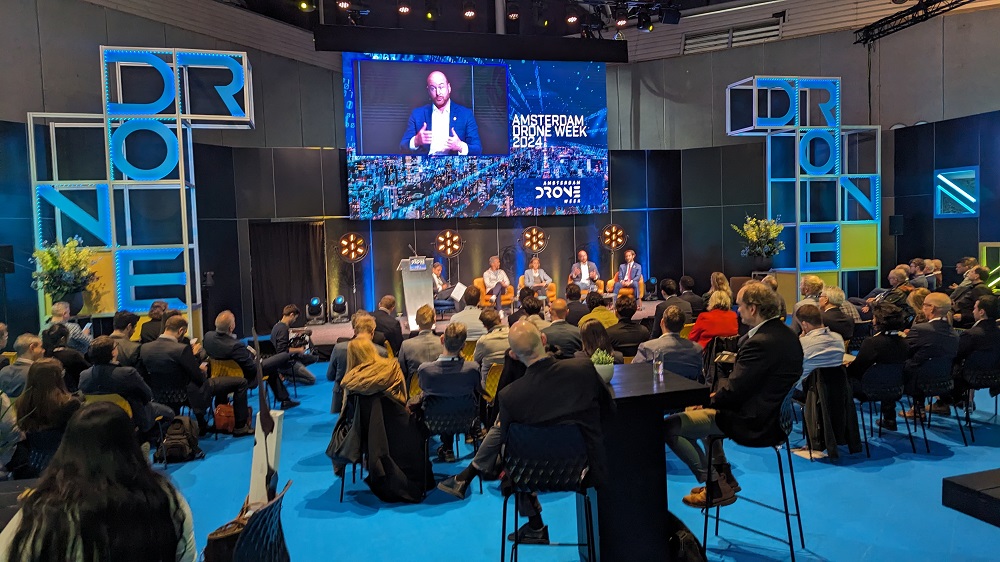

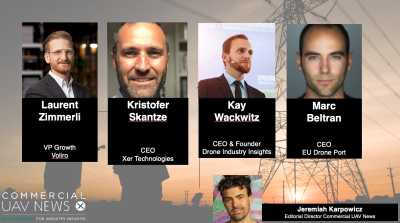
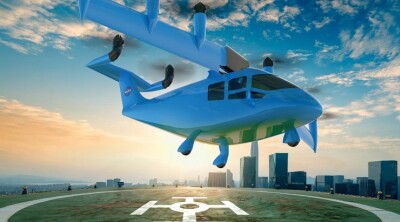










Comments